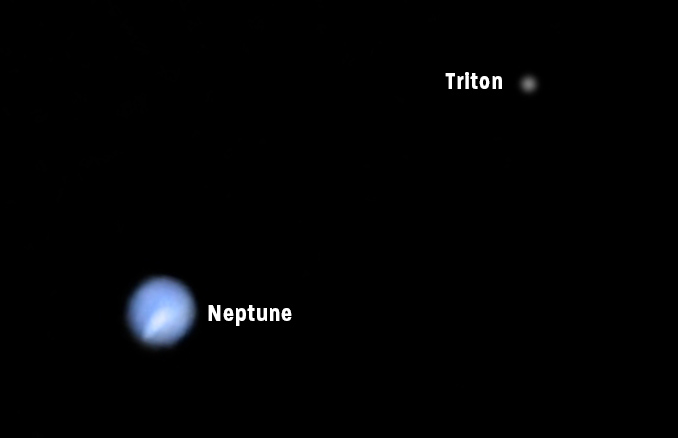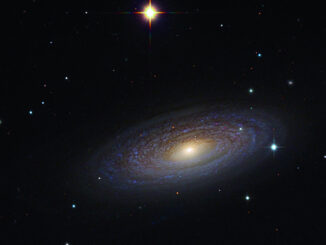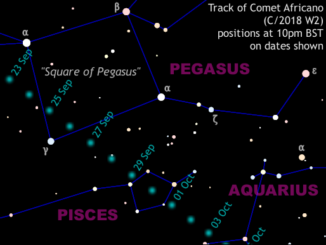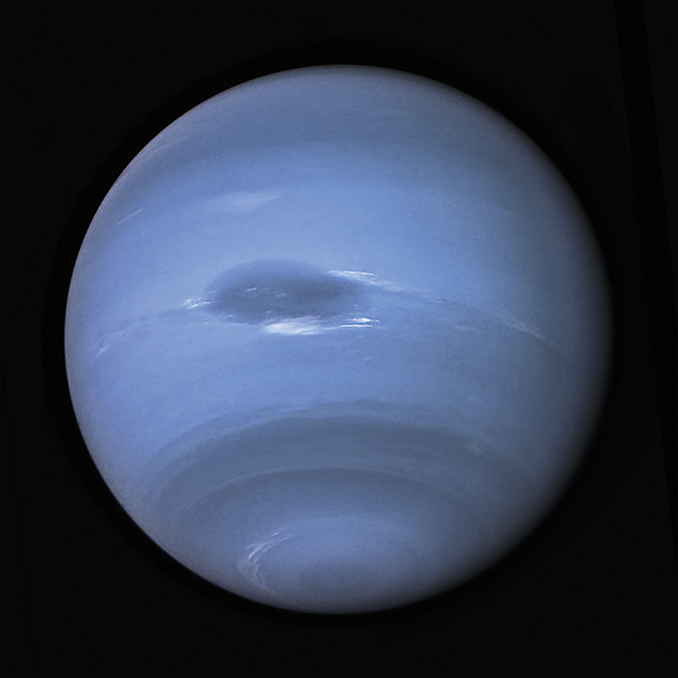
Neptune comes to opposition at late-evening on Friday, 16 September, when it’s located among the stars of northern Aquarius. The farthest known planet lurks in the frigid depths of the Solar System, lying at the vast distance of 4.324 billion kilometres (28.910 astronomical units) from Earth – sunlight reflected from Neptune takes four hours to hit our retinas! Yet Neptune shines bright enough, at magnitude +7.8, to be picked up in a pair of binoculars and is an easy target for a small telescope. Not surprisingly, given the planet’s huge remoteness, Neptune is well beyond naked-eye range, the only planet the Solar System that is.
On opposition night, Neptune can be tracked down to a rather star-poor area of north-eastern Aquarius, close to the boundary with Pisces. At this location, just a few degrees south of the celestial equator, the ice-giant planet culminates around 35° high from the south of England at about 1am BST. Neptune remains on show in the evening to early evening sky for the rest of the year.
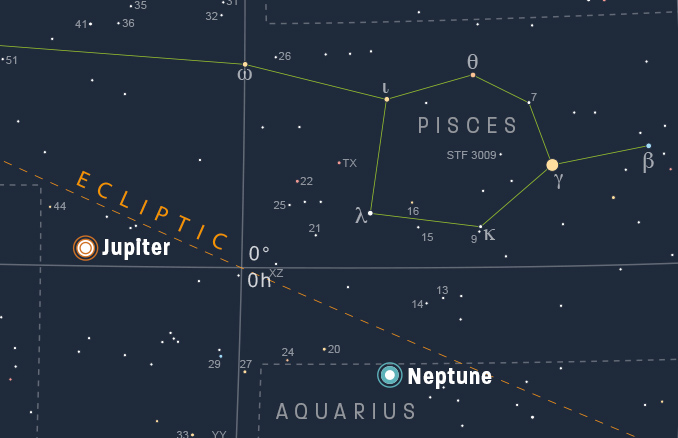
Observers based at mid-northern latitudes have had a very long wait for Neptune to achieve a decent peak altitude. Indeed, not since the late 1940s has Neptune appeared as far north in the sky. It lingered long in the depths of the southern sky for most of the later half of the twentieth-century.
Neptune is a gaseous ice-giant planet with a radius of 24,764 kilometres (15,388 miles), four times wider than Earth though three times smaller than Jupiter. It lies so far away that all amateurs can see through a telescope is its tiny, 2.4”-sized disc. A telescope in the 100–150mm (four- to six-inch) class, operating at around 100x, is powerful enough to resolve Neptune’s tiny blue-green disc. Unfortunately, even a large telescope struggles to glean much detail on its rather bland disc, though high resolution planetary imagers should have more success, especially when using infra-red filters in conjunction with an infra-red sensitive camera.
Neptune does boast a giant moon called Triton; in Greek mythology a god of the sea and the son of Poseidon and Amphitrite. Triton is 2,710 kilometres (1,680 miles) in diameter, ranking it the seventh-largest moon in the Solar System. It shines at magnitude +13.4, bright enough to be found through a 250–300mm (10- to 12-inch) telescope.
Triton completes an orbit of Neptune in 5.9 days, and from our perspective its unique retrograde motion along an elliptical path takes it as far away as 17 arcseconds from Neptune.
